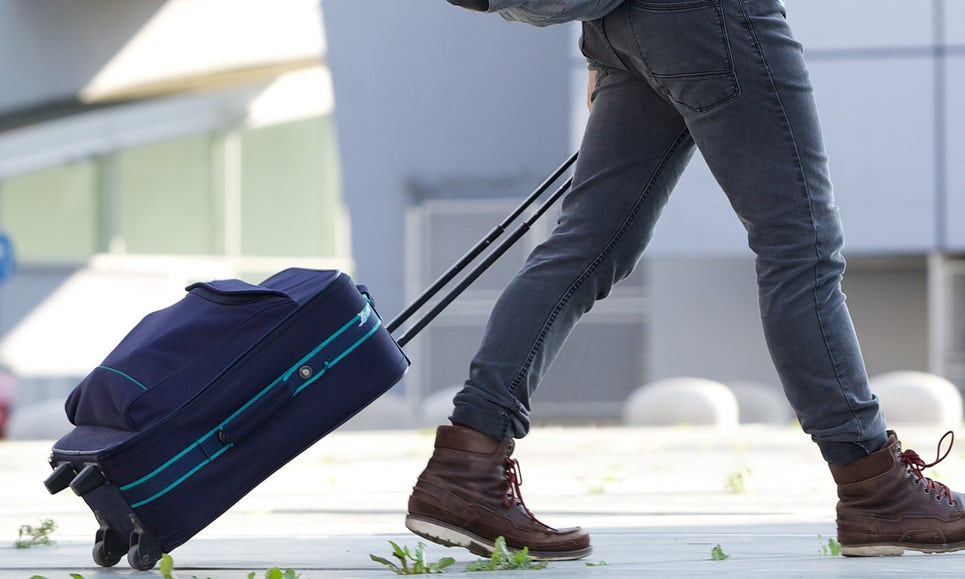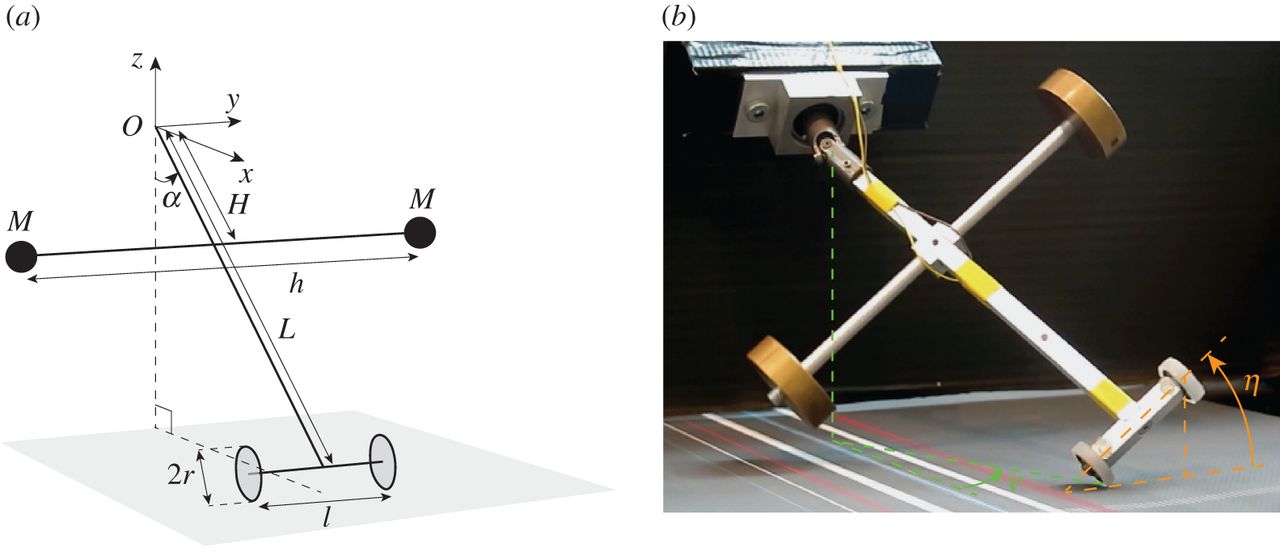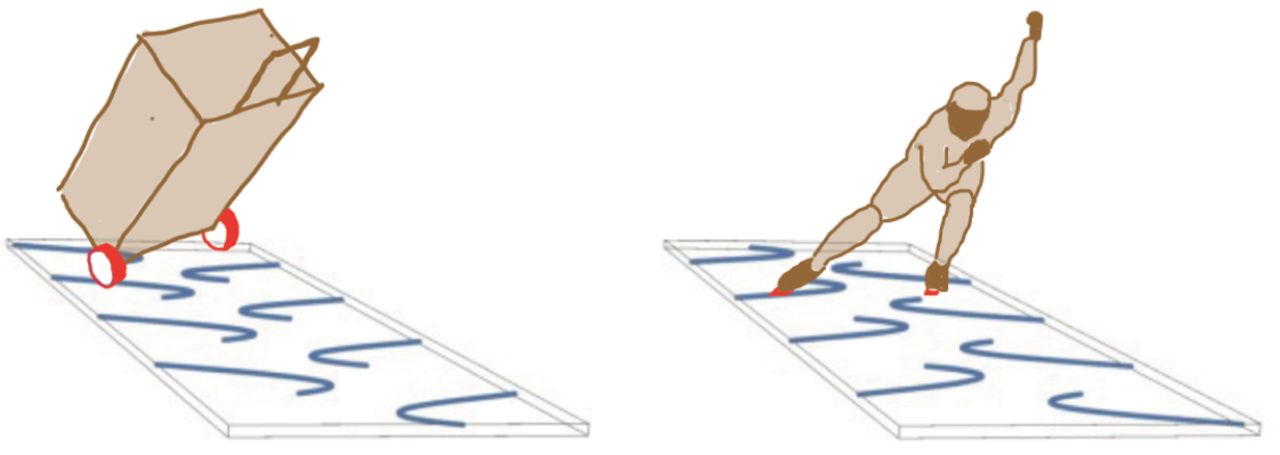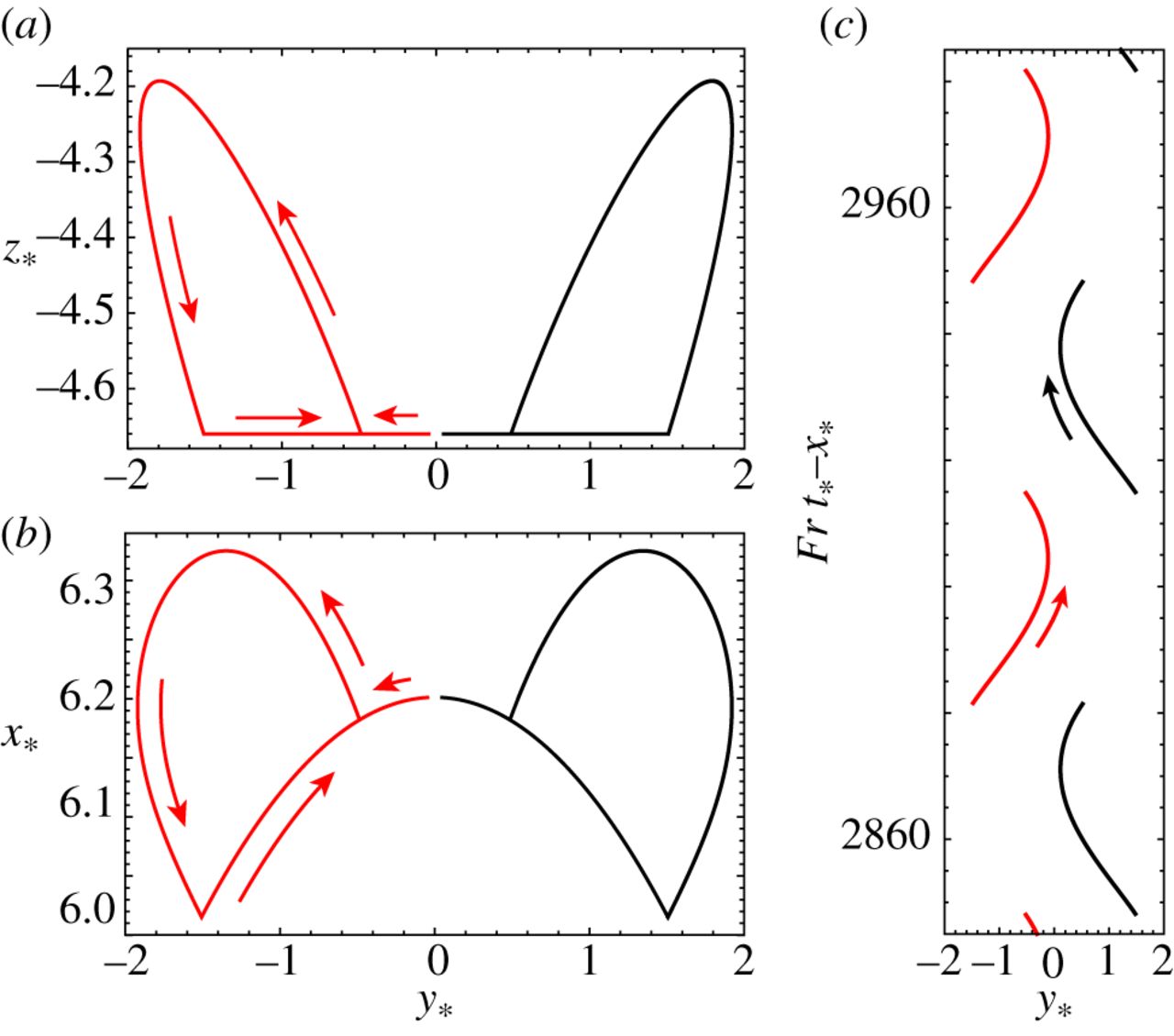Physicists have explained how to calm a suitcase on two wheels, which is swinging from side to side

Many people faced with the situation that a cart or bag on two wheels loses its equilibrium state at high speed - and begins to sway from side to side. A trigger for unwanted lateral movement can be a sudden obstacle on the ground or a sudden change of direction. After that, the suitcase begins to swing right on the go, and the amplitude of oscillations increases until the suitcase falls on its side.
This phenomenon has caused a number of theoretical studies in the past, but researchers have recognized the suitcase oscillations either as a simple non-dissipative non-linear pendulum ( Graner et al., “Problems of Physics”, 2011 ), or as a forced non-linear pendulum ( Plo, Acta Mechanica, 1996 ).
According to the authors of these works, the walker creates a periodic moment on the handle of the suitcase and, for the range of natural frequencies, the suitcase overturns. In these studies, the suitcase had a unique degree of freedom, which prevented the inherent instability as an initial property. In fact, the rich dynamics of the suitcase is actually created by a combination of translational and rotational movements. A solid body may experience such a connection of dissimilar motions due to the forces that act on it at points of contact with other bodies. These forces either limit the position of the suitcase (a holonomic constraint), or impose a relationship between position and speed (a nonholonomic constraint). Although holonomic constraints are strict in the sense that they eliminate degrees of freedom, nonholonomic constraints, on the contrary, give the suitcase more freedom. That breadth of movement, which gives nonholonomic restrictions, often leads to parasitic movements. Famous examples are the regenerative blazing of machine tools or the vibration of car wheels. Rocking a suitcase is another example of the same phenomenon, scientists say.
A group of physicists from the laboratory of complex systems and materials of the University of Paris (Sorbonne) thoroughly studied this problem theoretically and experimentally , clearly claiming the 2017 Nobel Prize. For the experiments was designed a special installation on two wheels with weights.

Scientists have provided experimental and theoretical evidence that the swinging of a suitcase is caused by instability. This instability is generated by the connection of movements on the tilt and shift of the suitcase under the influence of its translational motion. In particular, the separation of the wheel from the ground and lifting it up causes the rolling suitcase to move to the side. In this case, the wheels roll without sliding, and the axis of inclination of the suitcase from the handle to the rolling wheel is not perpendicular to the axis of rotation of the wheel. This disturbance affects the amplitude of the swinging of the suitcase, which fades or increases with time. In such an unstable state, the suitcase eventually turns over or reaches the limit cycle of stable oscillations, the authors of the scientific work write.


Interestingly, instability arises only for a certain range of geometrical parameters and only beyond the critical speed of driving. The researchers conducted a series of experiments on a small model of a suitcase, studying the effect of its geometry and speed on the force of rocking - and made the corresponding bifurcation diagrams. They found, in particular, that it was easier to unbalance a suitcase at a lower rolling speed than at a higher one. This partially contradicts the conclusions of previous theorists, who pointed to the high rolling speed of a suitcase as a necessary condition for the onset of instability.
Thus, the higher the rolling speed, the less likely that the suitcase will lose stability and turn over. Physicists explain that this is happening, because the energy of translational movement along a straight path causes the suitcase to move more to the side, rather than lean, reducing the chances of turning over.
Scientists give practical advice to travelers who are faced with the pendulum swinging of a suitcase. In this situation, it is necessary not to slow down, but on the contrary - to add step and accelerate as much as possible. “We need to accelerate rather than slow down in order to soften the amplitude of oscillations,” write the authors of the scientific work, but right there they add with a hint of hopelessness: “An inexperienced suitcase will not react in this way.”
An alternative option to transfer energy from swinging to lateral movements is to reduce the angle of inclination to the horizontal, that is, lower the retractable handle.
The article was published on June 21, 2017 in the journal Proceedings of the Royal Society (doi: 10.1098 / rspa.2017.0076).
All Articles